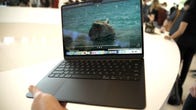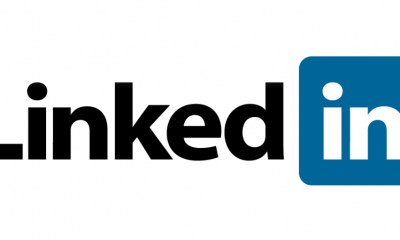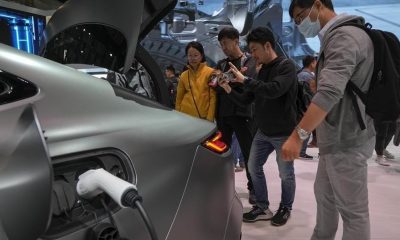Tech
Apple M2 MacBook Air Hands-On: Bigger Screen, Higher Price – CNET
This story is part of WWDC 2022, CNET’s complete coverage from and about Apple’s annual developers conference.
Apple’s new M2-powered MacBook Air adds a lot of new features, but it also brings back my least favorite: The laptop’s starting price is over $999.
For much of its life, the MacBook Air sat at a comfortable $999, but in 2018 a redesign bumped up the price by $200. By 2020, the starting price was back to $999, and I felt that things were as they should be.
Guess what? It’s now 2022, and with another redesign, the MacBook Air starts at $1,199… again.
I harp on this just because that significant jump for a very mainstream laptop will put it out of reach for many of the students and artists who could get the most out of it. Other than that, I do like just about everything else about the new version. It’s also worth noting the late-2020 M1 MacBook Air remains available, for now, at $999.
After Monday’s WWDC 2022 keynote, I had a chance to get some limited hands-on time with the new MacBook Air. It wasn’t a lot of time, so I focused mostly on the new physical design and how the system looked and felt.
The M1 MacBook Air, one of the first sets of Macs to move from Intel to Apple Silicon, is not a bad-looking machine, but it’s based on a design that launched in 2018, which is approximately forever ago in computer terms. The new version moves from the traditional soft, tapered design to the boxier, blockier look of the 14-inch and 16-inch MacBook Pro laptops from late 2021. It’s a more modern, more constructivist design (in that it largely rejects decorative stylization).
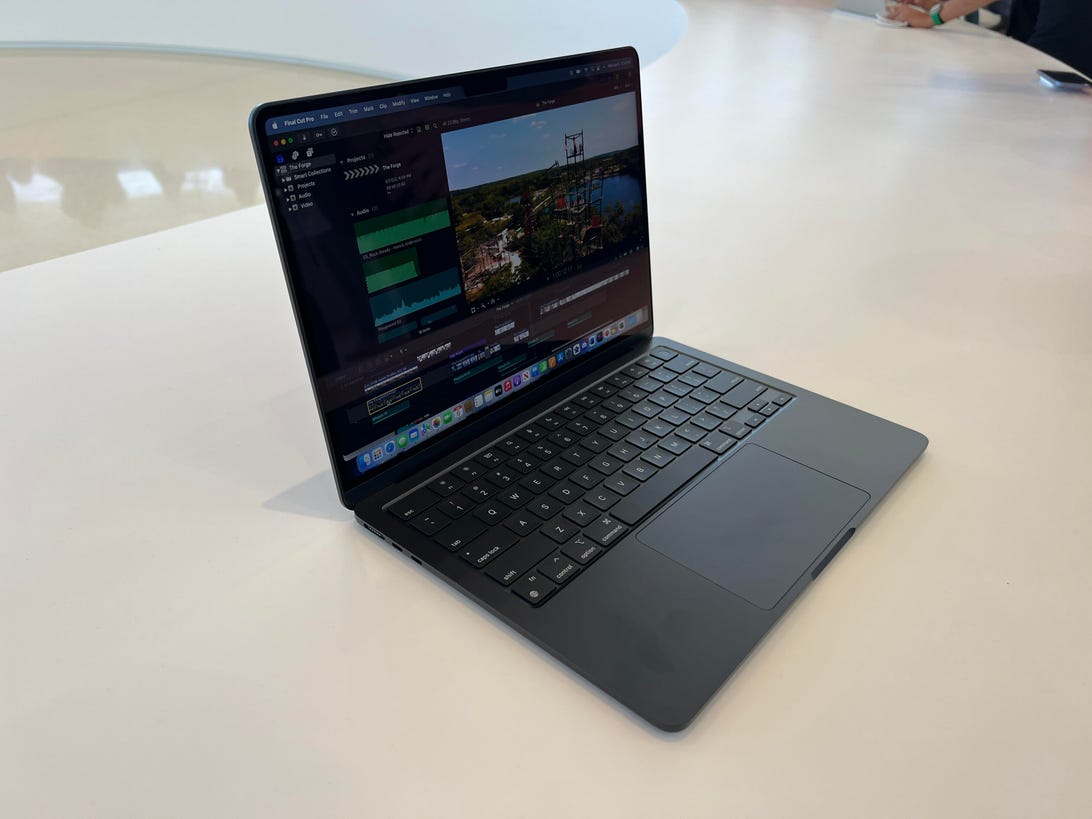

Dan Ackerman/CNET
But the new MacBook Air goes beyond the Pro models it copies in one important respect: It adds a new color to the usual gray and silver (and the M1 Air’s gold) — a new Midnight color, which appears as a matte-black finish. It’s hands-down the most striking new MacBook look in a long time, and reminds me of the old matte-black polycarbonate MacBooks of the mid-2000s.
Its footprint is a hair smaller than before, as is the weight, at 2.7 pounds versus 2.8 pounds for the M1 MacBook Air. But the new model felt even smaller and more portable than that when I picked it up — largely because it’s thinner, at 11.3mm. The M1 version tapers down, but it measures 16mm at the rear hinge.
The new M2 MacBook Air isn’t going on sale until July, so it may be some time before I’m able to give it a more in-depth, hands-on testing. I’m especially eager to see how its 1080p-resolution webcam works, which is probably the single most important upgrade for a lot of people who’ve tired of the never-great 720p webcam in previous MacBook Air laptops, up to and including the M1 version.
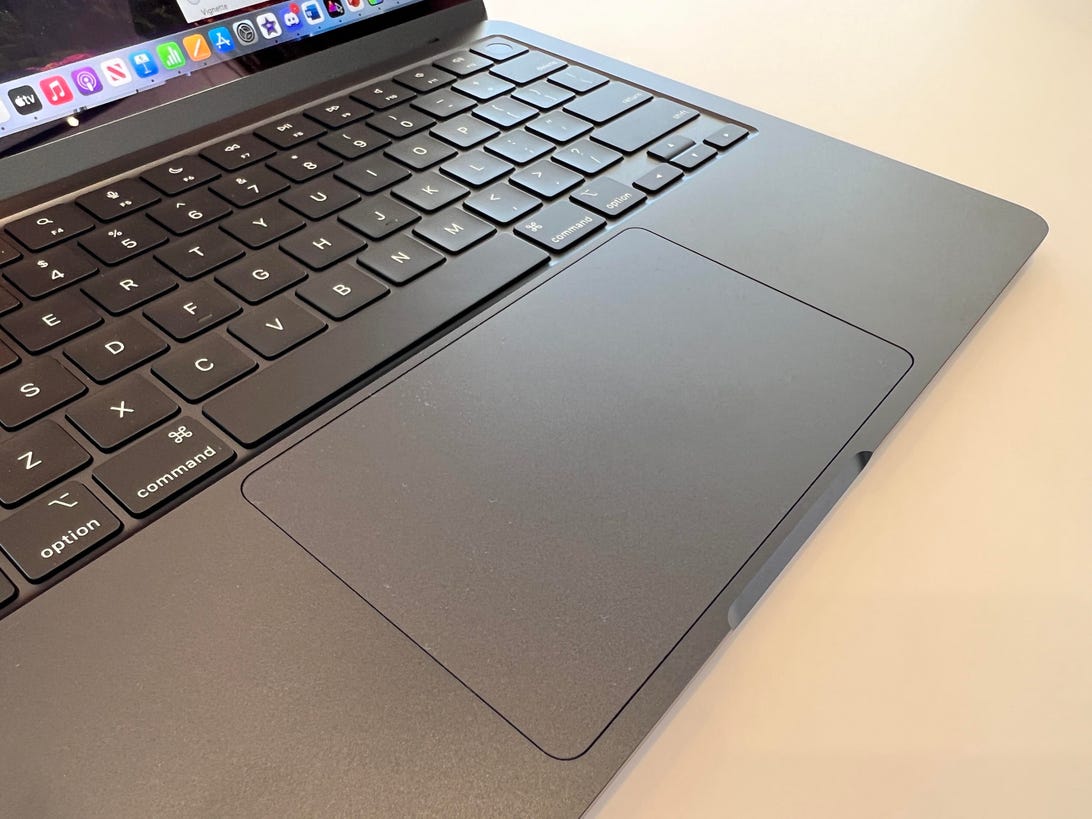

Dan Ackerman/CNET
I’m also very interested in spending more time with the new, slightly larger 13.6-inch screen (versus 13.3-inch), which Apple says is 25% brighter, at 500 nits. It also adds MagSafe, which returned in last year’s new MacBook Pro systems, and its touchpad is, according to Apple, slightly larger, but it wouldn’t put a number or percentage on it.
Interestingly, almost none of these improvements are available in the new 13-inch MacBook Pro, also announced at WWDC 2022. It lacks the larger screen, better camera, MagSafe connection and new colors. It’s, on paper at least, the exact same as the late-2020 13-inch MacBook Pro, just with the new M2 chip replacing the M1. It does, however, remain the only way to get your hands (or fingers) on the nearly extinct Touch Bar.
Tech
Google Unveils AI-Powered Pixel 9 Lineup Ahead of Apple’s iPhone 16 Release
Google has launched its next generation of Pixel phones, setting the stage for a head-to-head competition with Apple as both tech giants aim to integrate more advanced artificial intelligence (AI) features into their flagship devices. The unveiling took place near Google’s Mountain View headquarters, marking an early debut for the Pixel 9 lineup, which is designed to showcase the latest advancements in AI technology.
The Pixel 9 series, although a minor player in global smartphone sales, is a crucial platform for Google to demonstrate the cutting-edge capabilities of its Android operating system. With AI at the core of its strategy, Google is positioning the Pixel 9 phones as vessels for the transformative potential of AI, a trend that is expected to revolutionize the way people interact with technology.
Rick Osterloh, Google’s senior vice president overseeing the Pixel phones, emphasized the company’s commitment to AI, stating, “We are obsessed with the idea that AI can make life easier and more productive for people.” This echoes the narrative Apple is likely to push when it unveils its iPhone 16, which is also expected to feature advanced AI capabilities.
The Pixel 9 lineup will be the first to fully integrate Google’s Gemini AI technology, designed to enhance user experience through more natural, conversational interactions. The Gemini assistant, which features 10 different human-like voices, can perform a wide array of tasks, particularly if users allow access to their emails and documents.
In an on-stage demonstration, the Gemini assistant showcased its ability to generate creative ideas and even analyze images, although it did experience some hiccups when asked to identify a concert poster for singer Sabrina Carpenter.
To support these AI-driven features, Google has equipped the Pixel 9 with a special chip that enables many AI processes to be handled directly on the device. This not only improves performance but also enhances user privacy and security by reducing the need to send data to remote servers.
Google’s aggressive push into AI with the Pixel 9 comes as Apple prepares to unveil its iPhone 16, which is expected to feature its own AI advancements. However, Google’s decision to offer a one-year free subscription to its advanced Gemini Assistant, valued at $240, may pressure Apple to reconsider any plans to charge for its AI services.
The standard Pixel 9 will be priced at $800, a $100 increase from last year, while the Pixel 9 Pro will range between $1,000 and $1,100, depending on the model. Google also announced the next iteration of its foldable Pixel phone, priced at $1,800.
In addition to the new Pixel phones, Google also revealed updates to its Pixel Watch and wireless earbuds, directly challenging Apple’s dominance in the wearable tech market. These products, like the Pixel 9, are designed to integrate seamlessly with Google’s AI-driven ecosystem.
Google’s event took place against the backdrop of a significant legal challenge, with a judge recently ruling that its search engine constitutes an illegal monopoly. This ruling could lead to further court proceedings that may force Google to make significant changes to its business practices, potentially impacting its Android software or other key components of its $2 trillion empire.
Despite these legal hurdles, Google is pressing forward with its vision of an AI-powered future, using its latest devices to showcase what it believes will be the next big leap in technology. As the battle for AI supremacy heats up, consumers can expect both Google and Apple to push the boundaries of what their devices can do, making the choice between them more compelling than ever.
News
Microsoft Outage Hits Payment Processors
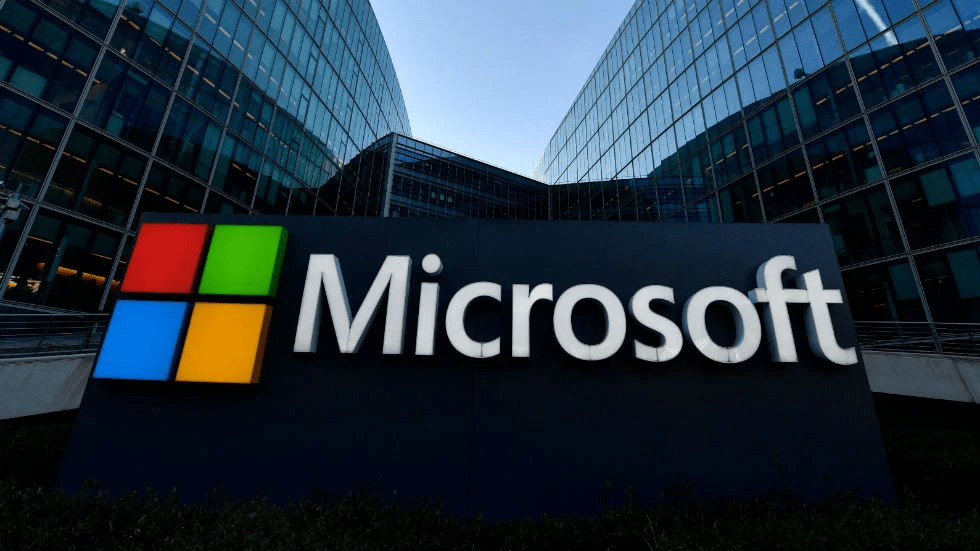
When major payment processing systems have problems, the issues impact many critical systems that society depends on. In this article, we’ll explain the cause of the Microsoft outage and discuss the impact computer networking issues had on Canada. We’ll also examine whether or not Microsoft was at fault and what businesses can do to prevent further outages.
What Happened With the Microsoft Outage?
The outage with Microsoft’s Azure payment processor resulted from a buggy security update from an outside company, CrowdStrike. CrowdStrike offers information technology security services for many Microsoft Windows computers. The company’s software developers sent a new update out, but instead of patching up minor issues with the existing software, the code within conflicted with Windows and prevented computers from booting up. Users expecting to start their computers for a typical day were instead faced with the dreaded “Blue Screen of Death” error message.
So, how does this produce a problem and a payment processor issue? Many computers running payment processing, among many other kinds of software used for airlines, banks, retail, and other essential services, couldn’t start and were unable to let payments through. This is a catastrophic issue for companies that are heavily reliant upon the speed and ease of an electronic transaction.
In Canada, the outage impacted critical computer systems for air travel. Flights couldn’t be paid for and booked, which caused major problems for customers unable to make transactions while flights remained grounded. Travellers stuck waiting for flights to take off made their way over to the airports’ Starbucks and other vendors, only to discover unusually long lines due to payment issues. Even online gamblers looking to take their minds off the situation couldn’t take full advantage of one of the fastest payment options out there because of the outage.
Aside from payments, hospitals for major health systems had to use paper to complete important tasks like ordering lab work and getting meals to patients. Emergency dispatch lines were temporarily unable to function correctly while their computer systems were down.
How Was the Outage Fixed?
Thankfully, CrowdStrike fixed the problem on their end quickly, mostly via an additional reboot that allowed CrowdStrike to send over unflawed code. Unfortunately, for some business and private customers, rebooting wouldn’t be enough with command-line level adjustments needed for the operating system to run correctly.
The Good and Bad of Outages
First, we’re thankful that the outage was not caused by hackers accessing and stealing a mountain of personal data. A recent outage with an automotive software provider went on for much longer and ended much worse for software provider CDK, which likely paid an undisclosed sum north of $20 million to get data back and systems restored.
By some chance, Microsoft is reported to have experienced its own outage, and many information technology professionals blame Microsoft in part for their issues because of how their systems attempted to fix the problem by rebooting over and over again, though some of Microsoft’s PCs needed to warn users to make a change manually. Unfortunately, any computer that required manual intervention took longer to recover, as a knowledgeable person had to access each computer affected by the issue. In some cases, between dealing with several hours of backlogged tasks and slow recovery processes, some businesses took days, not hours, to get back online.
The outage brings up another major point in the cybersecurity and computer industry. CrowdStrike and Microsoft are both big companies in their respective fields. As a result, the effects of bad code spread much further than they could have if there were more competitors making security products or if there were more software companies making operating systems like Windows. While only 8 million computers were believed to be affected out of a much larger global network, those are essential computers for worldwide communication and payment processing. Perhaps companies should be putting their eggs in more than one basket?
The testing methods for the outage are unclear—did CrowdStrike test the routine software update enough to detect the potential for a major outage? Apparently not.
What Should Businesses Do Next?
Software like Microsoft Azure’s payment systems come from what information technology professionals call ‘the cloud.’ The software is remotely managed over the internet, meaning that the computer that runs the system is not physically present at the location. Unfortunately, this also means that an issue with the internet can take critical systems out of service.
Businesses ranging from major airlines and banks to mom-and-pop stores would be well served by backup systems at their locations. These don’t have to be as primitive as the old-fashioned credit-card carbon-copy slide, but there are options available with consistent service that don’t repeatedly rely on the same networks.
Conclusion
There were certainly challenging moments for Canadian businesses and emergency services during the CrowdStrike and Microsoft outage. As they scrambled to understand the problem and waited, albeit briefly, for issues to resolve, many companies learned the importance of having local and reliable backup for their computer systems.
Tech
New photos reveal more details about Google’s Pixel 9 Pro Fold

Google’s secret new line of Pixel 9 phones isn’t that big of a secret anymore. Taiwan’s National Communications Commission (NCC) released new photos of the phones including the Pixel 9 Pro Fold from almost every conceivable angle.
Android Authority found the photos in the NCC archives and uploaded galleries of each of the four phones including the Pixel 9, 9 Pro, 9 Pro XL and 9 Pro Fold. They reveal some interesting details about the new Pixel phones.
The charging rates will be a little faster than the last generation of Pixel phones: Taiwanese authorities measured 24.12W for the base model, 25.20W for the Pro and 32.67W for the 9 Pro XL. The Pixel 9 Pro Fold, however, was the slowest of all of them at 20.25W. These numbers don’t often match up perfectly with the advertised ratings, so expect Google to be promoting higher numbers at its event.
Speaking of chargers, it looks like Google needed a bigger charger to power its new phones. Photos included in the NCC leak show each phone will come with a wall charger that’s around 45W depending on which model you purchase. The charger’s plug moved from the middle to the top of the brick.
The latest photo dump also shows the 9 Pro Fold unfolded for the first time. Google has moved the selfie camera to the inside screen for a wider field of view. The 9 Pro Fold also has a slimmer top and bottom, a reduced fold crease on the display and a full 180 degree unfolding angle to make a screen that’s just over 250mm or just under 10 inches.
These photos are the latest in a very long list of leaks of Google Pixel 9 photos. The last Pixel 9 leak came down yesterday showing two prototype models of the base and XL models. Google might look into buying a new combination lock for the high school locker where they apparently keep all their unreleased gear.

-

 News11 hours ago
News11 hours agoAlberta NDP Leader Naheed Nenshi slams premier’s plan to transfer hospitals
-

 News10 hours ago
News10 hours agoVote on $47.8B First Nations child welfare deal delayed due to chiefs’ concerns
-

 News16 hours ago
News16 hours agoLinkedIn Isn’t the Place to Express Your Frustrations and Anger
-

 News8 hours ago
News8 hours agoDuran leads off with 20th homer, Red Sox beat Blue Jays 6-3 to stop skid
-

 News23 hours ago
News23 hours agoChina accuses Canada of protectionism over 100% tariffs on electric vehicles
-

 News22 hours ago
News22 hours agoBMO reports $1.87B Q3 profit, provision for credit losses up from year ago
-

 News21 hours ago
News21 hours agoPolice issue Amber Alert for missing five-year-old in Quebec
-
News15 hours ago
Violent crimes surge in York Region, police call increase troubling

